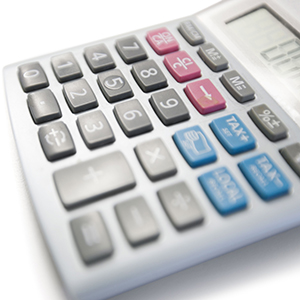Bernard Weatherill QC and Lauren Fraser explain when damages may be claimed
Question
I recently sold a substantial commercial property for redevelopment for residential purposes. The price I received from the property was calculated using a formula based on the valuation of the property. Since completion of the sale, it has come to my attention that the valuation was significantly lower than it should have been. Can I claim damages for negligence from the valuer?
Answer
For a valuation to be negligent, it must fall outside the boundaries of the acceptable margin of error either side of the proper valuation figure reached by the court. In most cases, the valuation process itself will also have to fall below acceptable standards.
Explanation
The process of valuing real property has strong subjective elements (Capita Alternative Fund Services (Guernsey) Ltd v Drivers Jonas (a firm) [2012] EWCA Civ 1417; [2012] 1 EGLR 119 at [43]). Where the valuation is complex, a number of variables will fall to be considered as well as market information about the property, but what emerges is ultimately an opinion as to the market value of the property on the basis on which it was valued.
The competence of a valuer cannot always be judged in a strictly mechanistic way. Titan Europe 2006-3 plc v Colliers International UK plc (in liquidation) [2014] EWHC 3106 (Comm); [2014] PLSCS 262, which dealt with the valuation of complicated property interests in Germany, illustrates how established legal principles fall to be applied when determining whether a valuation is negligent.
Establishing negligence
Not every error of judgment by a valuer will lead to a finding of negligence. To establish negligence, a claimant must prove that the disputed valuation was one which no reasonable valuer would have reached, and was outside the permissible margin of error (Singer & Friedlander Ltd v John D Wood & Co [1977] 2 EGLR 84).
The usual practice has been for the court to determine what it considers to be the competently assessed value of the property and what would constitute a reasonable “bracket” or permissible margin of error within which a competent valuation should fall. The court’s concentration is on the outcome of that process, since if the valuer’s valuation fell within the bracket then no loss would be sustained, however negligently the valuation may have been conducted.
The appropriate margin of error may vary from case to case, and it is no longer a safe rule of thumb to assume it to be 10% either side of the court’s valuation figure. It will be affected by the type of property and any particular complexities involved in valuing it. So, a standard residential property for which there are good comparables may justify a bracket in the range of 5% either side of the court’s valuation, whereas a one-off property with unusual features could give rise to a bracket of 15% or more (K/S Lincoln v CB Richard Ellis Hotels Ltd [2010] EWHC 1156 (TCC); [2010] PLSCS 156).
Titan
Titan illustrates that, in order to determine the breadth of the bracket, the valuation process itself must be examined before the court reaches what it considers to be a competent valuation. It has been emphasised that, especially where the property is complex to value (eg, a mixed-use development with a number of leasehold interests) there can be many methods of valuation, none of which will necessarily be wrong or fall below acceptable standards.
On the facts, the judge preferred Titan’s submission that the appropriate margin was 15% either side of the assessed competent valuation. He was critical of aspects of both parties’ experts’ approach, finding that each of them had failed to take account of relevant factors, which ultimately meant that both valuations fell outside the permissible margin of error.
He concluded that Colliers had strained to justify a desktop valuation previously given. In particular, it failed to take proper account of the market’s perception of the strength of the tenant’s covenants and of the difficulties in re-letting which might result if the tenant left. He found that its valuation was negligent as a matter of process, and that that negligent process resulted in a significant over-valuation being issued which was well outside even Colliers’ suggested margin of 20%.
As regards causation and reliance, the judge accepted as uncontroversial that:
1. it must be shown that the negligent valuation played a “real and substantial part” in inducing the claimant to enter into the transaction in question (Banque Bruxelles Lambert SA v Eagle Star Insurance Co Ltd [1994] 2 EGLR 108);
2. a claimant must show that he relied on the valuation and believed it to be correct (BBL at p127; §10-126 Jackson & Powell on Professional Liability, 7th ed);
3. a valuer is only liable for the damage flowing from the valuation being wrong (South Australia Asset Management Corporation v York Montague Ltd [1997] AC 191), and accordingly damages will be capped at the difference between the true market valuation and the actual valuation.
These are the issues which the court will take into account when considering whether the valuer was negligent and whether a claimant is entitled to damages. It may be of some comfort to valuers that even if a valuation falls outside the margin determined by the court, a valuer may be able to escape liability if he can prove that he exercised reasonable skill and care in carrying out his valuation (Goldstein v Levy Gee [2003] EWHC 1574 (Ch); [2003] PLSCS 154; Dennard v Pricewaterhouse Coopers LLP [2010]; Capita Alternative Fund Services).
Bernard Weatherill QC is a barrister at Enterprise Chambers and Lauren Fraser is an associate at Charles Russell Speechlys LLP
Questions on any topic can be e-mailed to egq&a@enterprisechambers.com and egq&a@charlesrussell.co.uk








